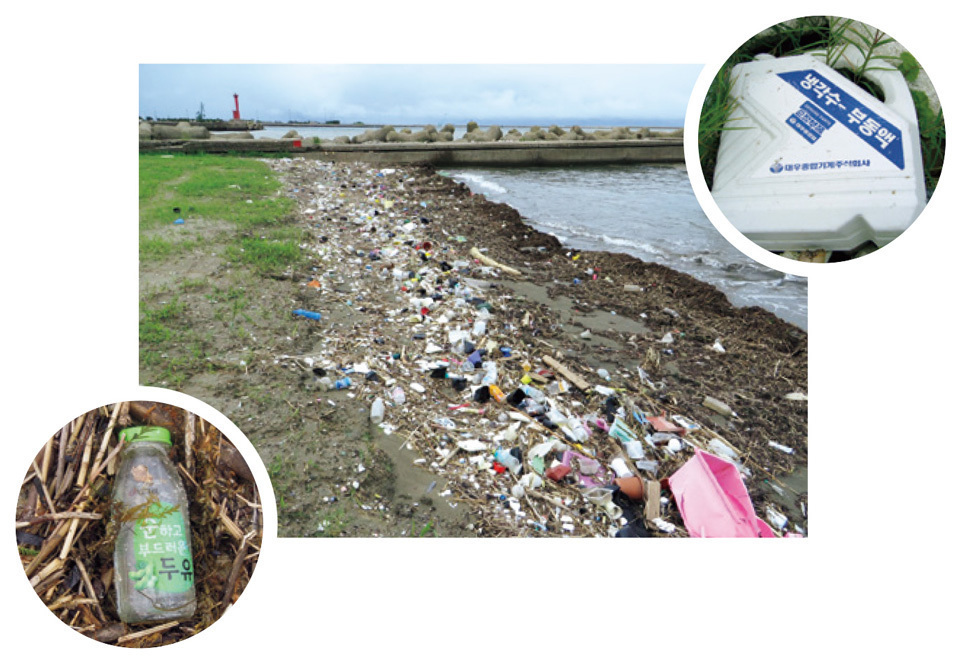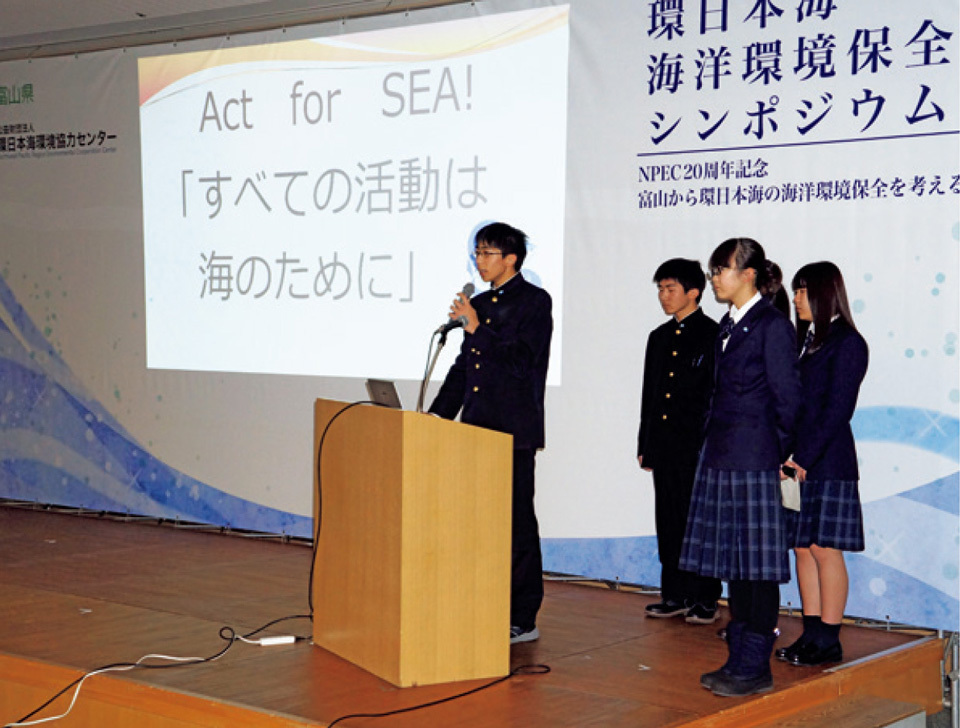A report on the situation of marine litter in coastal areas of the Sea of Japan, and the local community activities to protect the beautiful ocean

Toyama Bay is represented in the World’s Most Beautiful Bays Club, an international NGO supported by UNESCO.
The world congress of the club will be held in Toyama in October 2019.

The Sea of Japan is almost completely enclosed by the coastlines of the surrounding nations. Garbage dumped into the sea tends to be carried by currents moving from south to north, reaching the coastlines of many areas in Japan.
Japan, completely surrounded by the ocean, has a beautiful coastline everywhere you go. But lately huge quantities of marine litter have been washing up on the beaches, affecting the coast of the Sea of Japan in particular. Situated in the approximate center of the Japanese archipelago, Toyama Bay is a member of the World’s Most Beautiful Bays Club. It is also the site of the Northwest Pacific Region Environmental Cooperation Center (NPEC), a regional activities center for the Northwest Pacific Action Plan (NOWPAP; part of the United Nations Environment Program), with mission of surveying marine litter on the coast of the Sea of Japan, and fostering awareness of the marine litter problem.

Large amounts of trash wash up on the beaches of Toyama Bay.
Many of the items have foreign-language labels.
The majority of marine litter comprises objects made of plastic and Styrofoam. Large amounts of medical waste and polyethylene containers float through the Sea of Japan; sometimes as many as 20 thousand of these containers may be washed ashore all at once. Junichi Nakayama, director of the NPEC’s Research & Studies Department, observes, “Considerable expense and labor are required to collect this kind of garbage and process it properly, which becomes a major burden for local government bodies.” The Ministry of the Environment calculates that nationwide, the expense of marine litter countermeasures (including processing and awareness campaigns) costs Japan 4.1 billion yen (about $37 million) annually. The overall amount of marine litter washing ashore is estimated to be about 190-360 thousand tons.

About 120,000 people participated at various times in Toyama Prefecture’s coastal cleanup campaign in 2015, recovering 91 tons of garbage. Many local residents readily participate in cleanup activities.

At a recent symposium, local high school students presented results of researching ocean acidification, as well as the absorption and fixation of blue carbon by seashells.

Junichi Nakayama, director of the Research & Studies Department, and Misao Aibe, assistant director of the Planning & International Cooperation Division of the NPEC.
Toyama Prefecture’s response has been to hold a campaign to clean the coast from summer to autumn every year, under prefectural leadership, and to organize cleanup activities integrated with the educational programs of local elementary schools. The Faculty of Art and Design of the University of Toyama, in cooperation with the NPEC, has developed a seminar in which students themselves collect garbage from beaches, and use salvaged items to make works of art. That is one way of raising consciousness about the actual situation in Toyama Bay, and the need for involvement by local residents to maintain the beauty that is part of the region’s pride. Fortunately, a new awareness is spreading throughout the region, and voluntary cleanup activities by residents are increasing. The environment of Toyama Bay is being maintained by continuous involvement from both the public and private sectors.
On January 20, 2019, a symposium was held on the theme of “Protection of the Marine Environment of the Japanese Sea Area, from the Perspective of Toyama.” The program included a keynote presentation by a specialist in marine litter countermeasures, as well as research findings presented by local high school students. Misao Aibe, assistant director of the Planning & International Cooperation Division of the NPEC, commented, “Having surveyed the coast and seen the actual situation for themselves, the high school students showed a deep understanding of the problems we face. We’re hoping that more people will become aware of the importance of preserving the marine environment, and get involved in protecting the beauty of Toyama Bay.”





























